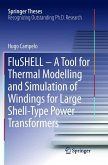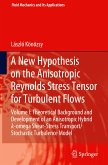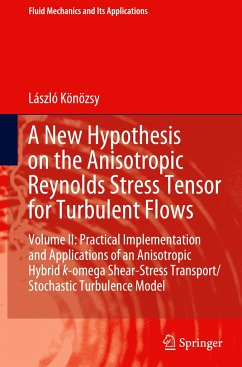The study of kinetic equations related to gases, semiconductors, photons, traffic flow, and other systems has developed rapidly in recent years because of its role as a mathematical tool in many applications in areas such as engineering, meteorology, biology, chemistry, materials science, nanotechnology, and pharmacy. Written by leading specialists in their respective fields, this book presents an overview of recent developments in the field of mathematical kinetic theory with a focus on modeling complex systems, emphasizing both mathematical properties and their physical meaning.
The overall presentation covers not only modeling aspects and qualitative analysis of mathematical problems, but also inverse problems, which lead to a detailed assessment of models in connection with their applications, and to computational problems, which lead to an effective link of models to the analysis of real-world systems.
Transport Phenomena and Kinetic Theory is an excellent self-study reference for graduate students, researchers, and practitioners working in pure and applied mathematics, mathematical physics, and engineering. The work may be used in courses or seminars on selected topics in transport phenomena or applications of the Boltzmann equation.
This volume aims to provide an overview of some recent developments of mathematical kinetic theory focused on its application in modelling complex systems in various ?elds of applied sciences. Mathematical kinetic theory is essentially based on the Boltzmann eq- tion, which describes the evolution, possibly far from equilibrium, of a class of particles modelled as point masses. The equation de?nes the evolution in time and space of the distribution function over the possible microscopic states of the test particle, classically position and velocity. The test particle is subject to pair collisions with the ?eld particles. The interested reader can ?nd in the book, Theory and Application of the Boltzmann Equation, by C. Cercignani, R. Illner, and M. Pulvirenti, Springer, Heidelberg, 1993, all necessary knowledge of the physics and mathematical topics related to this celebrated model of non-equilibrium statistical mech- ics. Another important model of mathematical kinetic theory is the Vlasov equation, where interactions between particles are not speci?cally collisions, but mean ?eld actions of the ?eld particles over the test particle. The model de?nes again an evolution equation for the one-particle distribution function over the microscopic state of the test particle. The two models brie?y mentioned above can be regarded as the fun- mental models of mathematical kinetic theory and the essential background o?ered from the kinetic theory for classical particles towards the modelling of large systems of several particles undergoing non classical interactions.
The overall presentation covers not only modeling aspects and qualitative analysis of mathematical problems, but also inverse problems, which lead to a detailed assessment of models in connection with their applications, and to computational problems, which lead to an effective link of models to the analysis of real-world systems.
Transport Phenomena and Kinetic Theory is an excellent self-study reference for graduate students, researchers, and practitioners working in pure and applied mathematics, mathematical physics, and engineering. The work may be used in courses or seminars on selected topics in transport phenomena or applications of the Boltzmann equation.
This volume aims to provide an overview of some recent developments of mathematical kinetic theory focused on its application in modelling complex systems in various ?elds of applied sciences. Mathematical kinetic theory is essentially based on the Boltzmann eq- tion, which describes the evolution, possibly far from equilibrium, of a class of particles modelled as point masses. The equation de?nes the evolution in time and space of the distribution function over the possible microscopic states of the test particle, classically position and velocity. The test particle is subject to pair collisions with the ?eld particles. The interested reader can ?nd in the book, Theory and Application of the Boltzmann Equation, by C. Cercignani, R. Illner, and M. Pulvirenti, Springer, Heidelberg, 1993, all necessary knowledge of the physics and mathematical topics related to this celebrated model of non-equilibrium statistical mech- ics. Another important model of mathematical kinetic theory is the Vlasov equation, where interactions between particles are not speci?cally collisions, but mean ?eld actions of the ?eld particles over the test particle. The model de?nes again an evolution equation for the one-particle distribution function over the microscopic state of the test particle. The two models brie?y mentioned above can be regarded as the fun- mental models of mathematical kinetic theory and the essential background o?ered from the kinetic theory for classical particles towards the modelling of large systems of several particles undergoing non classical interactions.
From the reviews:
"In this collection of articles by experts in the field the reader is given a rather comprehensive overview of many of the mathematical aspects and applications of the Boltzmann equation ... . intended for scientists and engineers in the applied sciences, my own feeling is that investigators whose acquaintance with mathematics is at an advanced level are likely to be the main beneficiaries of this book. The presentation of the material is excellent, very well organized, and highly recommended to this audience." (L.S. García-Colín, Journal of Statistical Physics, Vol. 132, 2008)
"In this collection of articles by experts in the field the reader is given a rather comprehensive overview of many of the mathematical aspects and applications of the Boltzmann equation ... . intended for scientists and engineers in the applied sciences, my own feeling is that investigators whose acquaintance with mathematics is at an advanced level are likely to be the main beneficiaries of this book. The presentation of the material is excellent, very well organized, and highly recommended to this audience." (L.S. García-Colín, Journal of Statistical Physics, Vol. 132, 2008)








